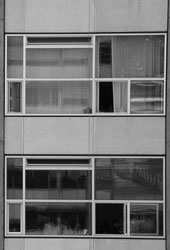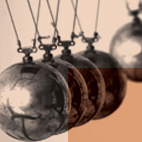|

The renaming of the college as a university reflects the change in the way the former College of Technology sees itself. Thanks in no small part to figures such as Max Bense, Käte Hamburger or Golo Mann, philosophy and other humanities had moved into the public limelight in the first decades after the war and influenced the mood in which the name change took place. Yet to this day the Universität Stuttgart has continued to reflect its origins in the College of Technology, as the engineering sciences still play a dominant role in its profile and weighting of subjects.
As the university of the state capital and also one of the most important urban regions in Germany, Universität Stuttgart plays an important role in providing training in the humanities and social sciences. Just like in the early 20th century, in the late 1960s the major humanities disciplines were deliberately expanded to allow prospective students from the Stuttgart region to study while living at home. Yet the humanities were also the very area that most clearly reflected the changing course of university policy. As early as the mid-1970s, at the time of the economic crisis following the abrupt awakening from the dream of limitless growth, the humanities were hit particularly hard by the first wave of cuts. The proposal to abolish humanities courses for prospective teachers was only abandoned after massive protests.
As in all stages of its history, recently the range of subjects taught at the university has repeatedly been expanded and adapted to new scientific and social challenges, such as the introduction and expansion of computer sciences. Recent changes, to name but one, have seen international courses being added to the university's training profile.
The internal structure of the Universität Stuttgart has also constantly seen transformations in line with guidelines set by state and federal governments. Thus the former Secondary and Vocational School, now a modern university, is still the subject of reforms and attempted changes.
| 1936 - 1968 |
Adolf Leonhard
Professor of Electrical Engineering (suspended between 1946 and 1952) |
| 1949 - 1978 |
Max Bense
Professor of Philosophy and Theory of Science |
| 1957 - 1977 |
Käte Hamburger
Professor of Literature and Aesthetics |
| 1964 - 1990 |
Frei Otto
Founder and head of the Institute for Light Two-Dimensional Structures (IL) |
| 1967 |
Renamed Universität Stuttgart |
| 1968 |
Higher Education Law
- The differentiation within the university between the groups of professors, non-professorial staff and students is removed
- Non-professorial staff and students are given decision-making rights
- 3 Faculties transformed into 19 Sections
|
| 1969 |
"Higher Education Plan I"
Expansion of the university (in terms of student capacity), especially in the so-called "humanities mass subjects" |
| 1972 |
"Higher Education Plan II"
Proposed reorganisation of the Universität Stuttgart and subjects into three "university sectors" within Stuttgart (subdivided into subject areas). This plan was not put into effect. |
| 1972 - 1993 |
Karl-Wolfgang Mundry
Professor of Botany |
| 1973 |
Amendment of the Higher Education Law
Reduction of university autonomy |
| 1976 - 1977 |
"Structural Plan"
- shift from university expansion plans towards a cost-cutting policy
- humanities are almost abolished (especially teaching qualification courses)
- after fierce protests the continued existence of the humanities is ensured and only moderate cuts are made
|
| 1979 |
University Law
- New organisational structure: Vice-Chancellor's Office (Vice-Chancellor, 2 Deputy Vice-Chancellors, Registrar), Faculties, Institutes
- abolition of the Constituted Student Body
- introduction of targets for length of courses
|
| 1979 |
150th anniversary |
| 1985 |
Opening of local rail link from city centre to Vaihingen
Longest German rail tunnel at the time |
| 2004 |
175th anniversary |
 |
|
|
 |
